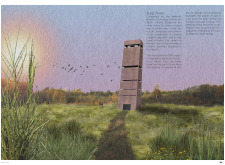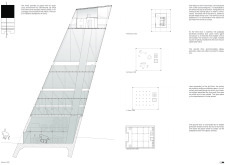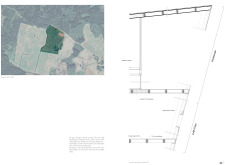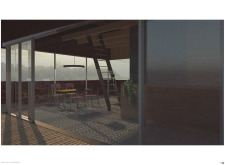5 key facts about this project
Kurgi Tower is located in the North Vidzme Biosphere Reserve, an area characterized by beautiful forests. Designed as a retreat, the structure aims to immerse visitors in nature while providing a space for relaxation and reflection. The overall design has a concept that mimics the shape of a tree, reaching upward to connect with the sky and the surrounding landscape.
Design Concept
The tower’s form draws inspiration from natural growth, breaking through the earth’s surface. This idea fosters a connection between the building and the environment. Each aspect of the design encourages visitors to experience the beauty of the biosphere while offering a space that is both functional and harmonious.
Spatial Organization
Inside, Kurgi Tower is divided into four floors, with each level serving a unique purpose. The fourth floor includes a balcony and a loft, granting expansive views of the forest. This level allows guests to engage with the landscape, creating an opportunity to enjoy the changing light throughout the day, from dawn until dusk.
Materiality
The exterior is covered with metallic ochre cladding, which contributes to the overall appearance of the tower. This material develops a patina over time, giving it a sense of history and context within the environment. It recalls nearby Ergeme Castle ruins, creating a link between past and present while enhancing the tower’s connection to the land.
Interaction with Nature
At ground level, six stables are included for the Latvian Ardennes horses. This feature invites visitors to interact with the animals, fostering a deeper relationship with both wildlife and the biosphere. By providing direct experiences, the design encourages a meaningful connection to the local culture and its natural inhabitants.
The structure promotes a sensory experience, drawing attention to changes in light and sound. The thickened windows throughout the building frame views of the forest while inviting sunlight to play across the interiors. This dynamic light creates patterns that enhance the atmosphere, making the spaces feel alive and connected to the natural world.






















































